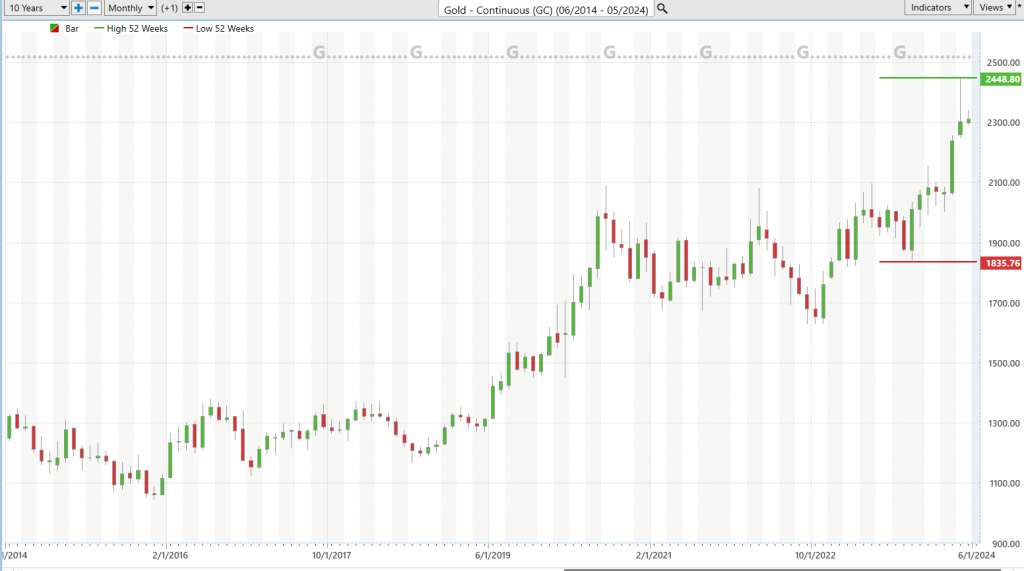This is a lengthy article on trading and investing in gold, with a focus on using technical analysis and artificial intelligence (AI) tools to make informed decisions. Here’s a summary of the main points:
Market Analysis
- The article notes that gold has been experiencing unprecedented price surges in 2023 and 2024.
- It also mentions that central banks globally have been amassing gold, underscoring its timeless value in times of crisis.
Technical Analysis
- The article introduces various technical analysis tools, including:
- Predictive Blue Line (PBL): a line that charts the course for trends in gold.
- Neural Index: a machine learning tool that recognizes patterns and detects complex relationships within market data.
- Daily Range Forecast: a tool that predicts daily trading ranges.
Intermarket Analysis
- The article explains intermarket analysis as a sophisticated trading strategy that examines the correlations and relationships between different asset classes, such as equities, bonds, commodities, and currencies.
Investment Strategy
- The article suggests that gold should be at least 10% of an investor’s liquid portfolio to act as a counterbalance to central planners.
- It also notes that savvy investors are gravitating towards gold, recognizing it as a pivotal asset for wealth preservation in chaotic times.
Disclaimer
- The article includes a disclaimer stating that trading involves a high degree of risk and that readers should not make trading decisions beyond their financial means or involve trading capital they are not willing to lose.
Some key takeaways from the article include:
- Gold is experiencing unprecedented price surges, making it an attractive investment opportunity.
- Central banks globally have been amassing gold, underscoring its timeless value in times of crisis.
- Technical analysis tools, such as the Predictive Blue Line and Neural Index, can be used to make informed trading decisions.
- Intermarket analysis is a sophisticated trading strategy that examines the correlations and relationships between different asset classes.
- Gold should be at least 10% of an investor’s liquid portfolio to act as a counterbalance to central planners.
However, it’s essential to note that trading involves significant risk, and readers should not make decisions without conducting their own research and consulting with financial experts.

